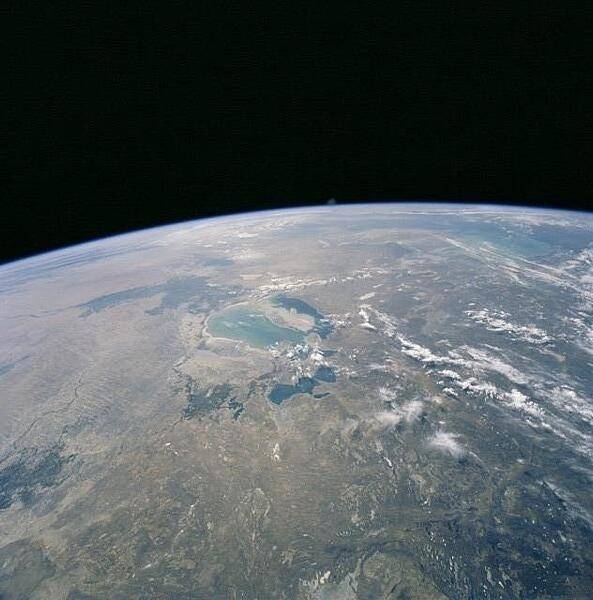Uzbekistan
Photos
2 Photos
Filter Categories
All
Filters
The Aral Sea, on the border between Kazakhstan and Uzbekistan, has diminished dramatically since the 1950s when its water was diverted for unfettered irrigation. By 2000, when this photo was taken, the surface area of the Aral had decreased by about two-thirds, and its volume by more than 80 percent. Today, only three lakes remain (covering less than 10 percent of the former surface area) and only one of these, the North Aral Sea (the deep blue area toward the bottom), has been partially restored. Image courtesy of NASA.

Throughout the first half of the 20th century, the Aral Sea was the world's fourth-largest lake. In the 1960s, the Soviet Union began a massive irrigation project in what are now Kazakhstan, Uzbekistan, and Turkmenistan, diverting water from the rivers that feed the Aral Sea to irrigate farmland. As its water levels dropped, the lake began splitting into smaller pieces: the Northern (Small) Aral Sea and the Southern (Large) Aral Sea. The Southern Aral Sea further split into eastern and western lobes. In August 2009 when this photo was taken, the Northern Aral Sea (upper right) still appeared healthy, the Southern Aral Sea consisted of two isolated water bodies: an irregular oval shape directly southwest of the Northern Aral Sea, and the long, thin remainder of the Southern Aral Sea's far western lobe. Much of what finally doomed the Southern Aral Sea was an attempt to save its neighbor to the north. In 2005, Kazakhstan built the Kok-Aral Dam between the lake's northern and southern portions to preserve water levels in the north. The Northern Aral Sea actually exceeded expectations with the speed of its recovery, but the dam ended prospects for a recovery of the Southern Aral Sea, which some authorities already regarded as beyond help. Lake sediments from this depleted water body have provided ample material for frequent dust storms. Image courtesy of NASA.
